THE BEGUILED Review
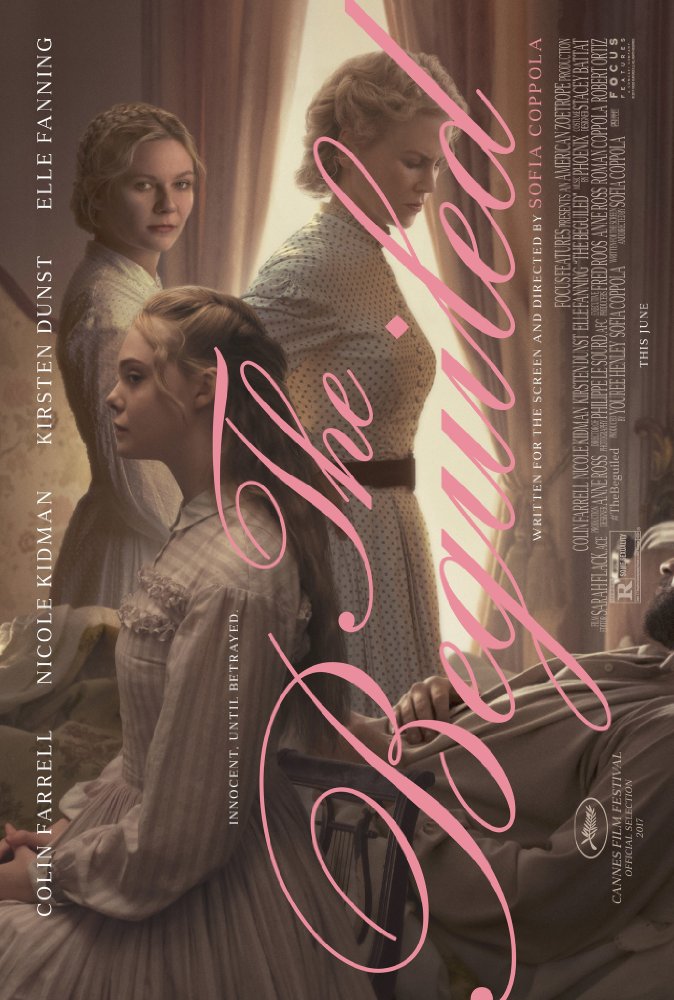
Director: Sofia Coppola
Genre: Drama
Year: 2017
Set in the Miss Martha Farnsworth Seminary for Young Ladies (the Madewood Plantation House in Napoleonville, Louisiana) during the Civil War, the illustrious Sofia Coppola’s THE BEGUILED follows seven women whose lives are disrupted by the arrival of a wounded Union soldier. While many have been quick to bring up the 1971 Don Siegel film of the same name and to compare the two, it is critical to see Coppola’s film not as a remake, but as its own adaptation of the 1966 novel A PAINTED DEVIL. I’m not sure how many people were actually aware of Siegel’s film (or the book, for that matter) before this film came to be, but it—like much of his filmography—is little more than a pulpy, rather sexist melodrama. Coppola’s version, though maintaining the same structure and a few similar characterizations, is almost an inverse of the 1971 film, offering a much more nuanced, balanced take on that sordid tale.
Like any good auteur, Sofia Coppola’s success has come with no shortage of criticism. For every bit of praise over her command of color, light, and mood, there is a detractor quick to call her films shallow, even empty. While it is no question that her interests in fashion and photography have heavily informed her direction, to suggest she is without substance or that she is only concerned with creating pretty pictures is not only unfair, but flat out incorrect. (Ironically, what those claims actually reveal is a failure to look below the surface of her films.) As a filmmaker, Sofia’s principle concern is in revealing the myriad ways in which women can be restricted and confined in life. That the images she conjures rarely reflect reality is exactly the point. The prettiness, the ostentatiousness of her presentation, is a ruse. It is a cover for an ugly truth beneath—meant to draw the eye, but also to distract. These women are more than their appearances, more than the ideas others form of them. But at the same time, they are bound by and to the systems and rituals that their lives have been built around. One way or another, they are trapped.
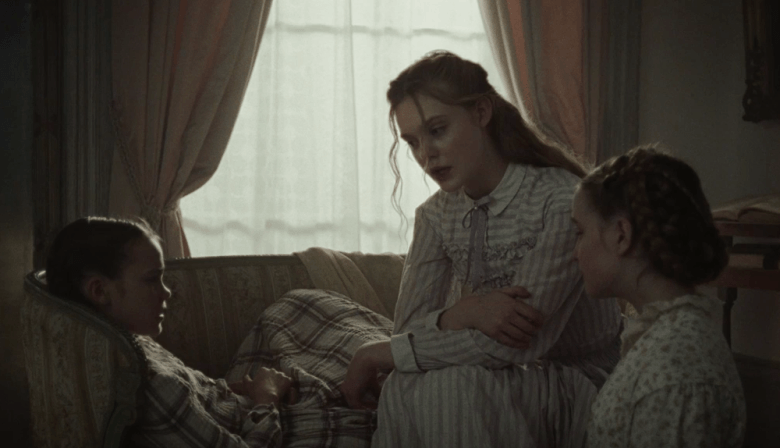
“What have I told you about playing to male stereotypes of women?”
In THE BEGUILED, Coppola once again meditates on her central themes, but this time around she applies a great deal more restraint in bringing her vision to the screen. The decadence seen in MARIE ANTOINETTE is dialed back considerably, as is the opacity and mystique of THE VIRGIN SUICIDES. The result is a film that is lavish, yet subdued; more subtle, but surprisingly clear in its intention. Coppola grants a window into the lives of these women—these girls—as they carry on in their prescribed duties, even as cannon-fire and smoke draws ever closer. They learn their lessons, they do their chores, they say their prayers . . . and for what? Someday soon their lives—their very way of life—may come to an end. There will come a point where the practiced tedium of their lives will be disrupted, and, not knowing anything else, they will try desperately try to put things back to how they were. Enter the soldier, Corporal John McBurney (Colin Farrell).
THE BEGUILED is through-and-through Coppola, tragic as it is beautiful. And while she employs nearly all of her directorial trademarks here, there is one key difference that sets it apart from the rest of her oeuvre. Where Coppola has made expert use of fluid camerawork to convey a sense of dreaminess or how her characters feel lost in their worlds in previous films, here her shots are fixed, representing the rigidity of life within the seminary. From the iron gates surrounding it, to the locked doors within, the Farnsworth Seminary which the girls call home—sprawling as it is—is but a gilded cage. A feeling of listlessness and longing pervades the grounds, and here, rather than take interest in their stitching or French lessons, the girls seem to occupy their time by gazing out at the greater world they wish to experience. But even if they were to leave, the world they would enter is no place for them. There is a recurring scene in which one of the youngest girls looks out on the battle through a spyglass. She desires to see the outside world, to see it up close, but she is only able to glimpse it through a narrow, distorted perspective. She is only able to see a small bit at a time, and will never be able to take in the big picture. She is literally unequipped to develop an understanding of the outside world.
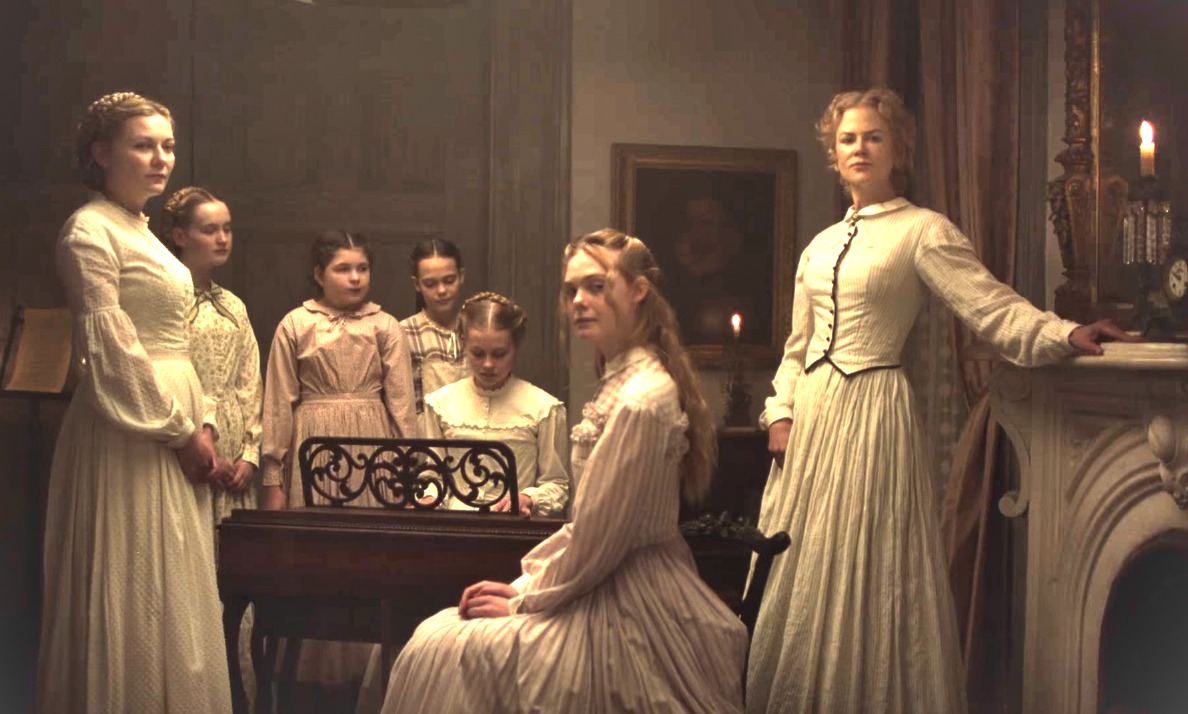
The very picture of happiness
As is also typical of a Sofia Coppola film (and fittingly for one taking place a good 15 years before the invention of the light bulb), THE BEGUILED pulls a BARRY LYNDON and is shot entirely with natural light. Beyond historical accuracy, the soft glows of sun and candlelight suffuse the film with a warmth that lends greatly to the film’s languid air. However, as a result, an equal number of scenes are left quite dim, especially those set within the shuttered rooms and long, lonely halls of the seminary. But this dimness, far from being a problem, again helps to set the overall mood and tone of the film and serves as a strong visual connection to the subject matter. A master of mise-en-scène, Coppola’s unification of light and tone is most apparent when she pits her most aesthetically pleasing elements against her most dismal backdrops. Here, the lush pastels and extravagant costumes for which she is so well known are muted to the point of appearing drab. The beauty of the girls’ dresses is diminished to the point where their well-kept appearances no longer serve as boundaries between their internal and external selves. Their curated personas fade into reflections of their dysphoria, revealing their quieted discontent. It is interesting, then, that their dresses only really appear bright and colorful when in the presence of John.
It is important to keep in mind that these girls are, above all else, bored. They have lived sheltered, isolated lives, with their only external human contact coming in the form of passing Confederates and their Union captives. In fact, it seems the only thing they know of the outside world is the war, of which they have no part, nor would they want any. So when John is discovered by the young, trusting Amy (Oona Laurence), it stirs the other women’s fear and contempt . . . but also their curiosity. Although it is downplayed considerably from the 1971 film, with him arrives another unwelcome visitor in the form of repressed, unaddressed sexuality. All the long, sad gazes suddenly break, piqued to the locked music room where John convalesces, and the cold silences fill with whispers and hurried footsteps. The seminary soon becomes a powder keg of desire, jealousy, and resentment. But where Clint was a manipulative opportunist and outright liar who preyed on the girls’ naiveté, Colin is more of a flirt whose only real crime is that of being a coward trying to save his own neck. And it is this which transforms the crux of the film into such a quandary.
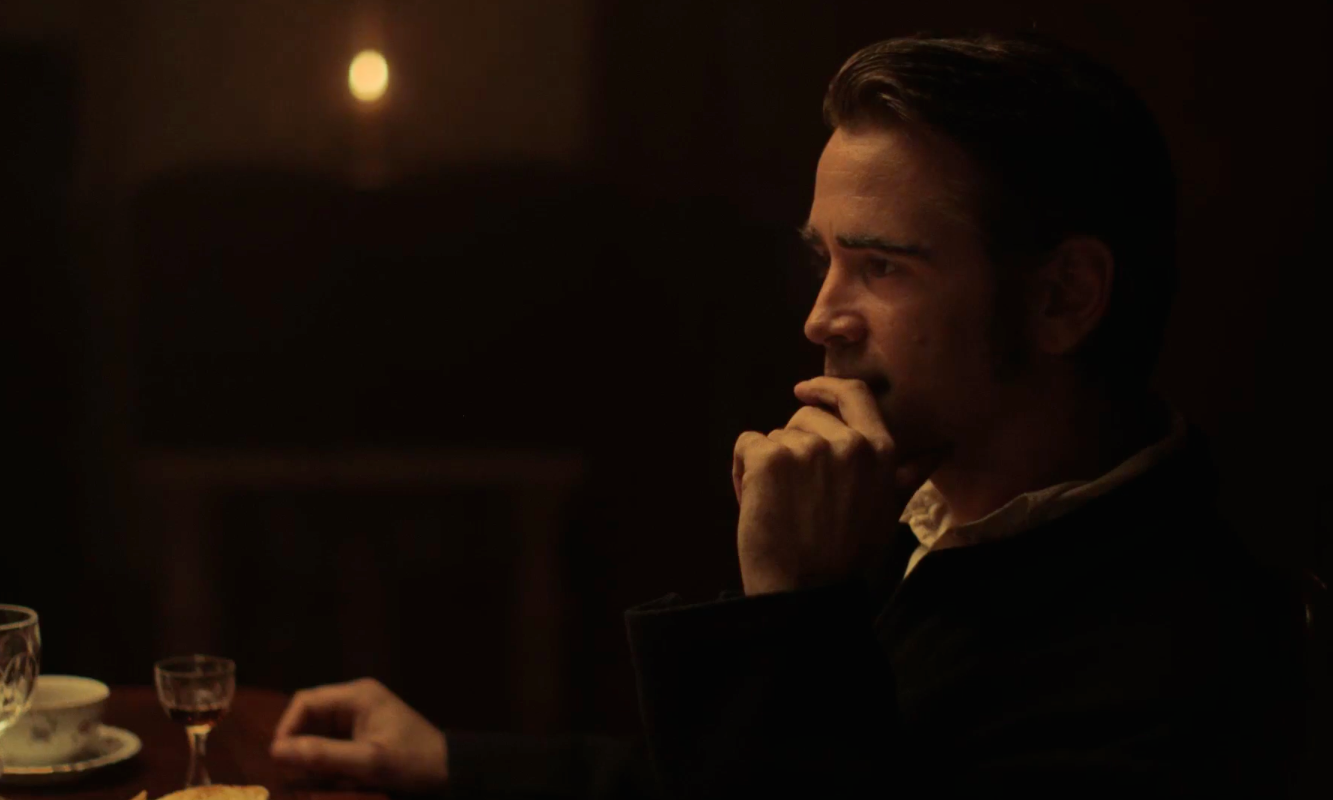
I mean . . .
Operating on a disjointed moral framework that lands it somewhere around MISERY territory, Siegel’s film is too haphazard to draw any real lesson from. And while Coppola’s take with THE BEGUILED is by no means black and white, the message becomes a lot clearer once you look past the obvious action-reaction dynamic that forms the backbone of the plot. Despite what the ad campaign would lead you to believe, vengeance is almost an afterthought. The women aren’t motivated by revenge so much as they are by preservation—not just of their lives, but their way of life. And even still, the women remain bound to “the Christian thing to do” even as John directly threatens them. It is Coppola at her most straightforward. If the overarching message of her filmic career has been ambiguous, hidden somewhere within a florid, idiosyncratic body of work, then this is her thesis statement: if the charming, handsome John represents the allure of the greater outside world brought into their small, insular world, then his transgressions are those of the world at large as well. The world, tempting and exciting though it may be, is just too unpredictable. Too dangerous, too cruel. It allows no place for a woman.
Yet for how expertly Sofia harmonizes her themes and imagery, perhaps the strongest aspect of THE BEGUILED is its casting. It is flawless. Rarely is the sum of an ensemble cast as good as its parts, but this one . . . I’m not sure I can do it proper justice. I can’t remember the last time I saw a group of people play off of each other well and so naturally. The chemistry is remarkable. Nicole Kidman continues her recent winning streak, bringing a carefully metered wit and iciness to the role, elevating Coppola’s film as a whole—a far cry from the harpy of the 1971 film. Kirsten Dunst, too, turns in a great performance as Edwina, the seminary’s teacher. A wilted flower of a person, she may be the most crestfallen in a house consumed by melancholy, but she is also the most complex and realized. Interestingly, Dunst’s Edwina behaves how I imagine her character in THE VIRGIN SUICIDES would if she would have carried on living.
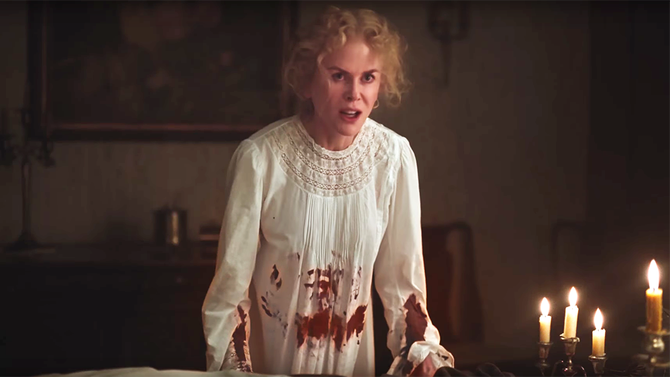
Hell hath no fury
But of all the talented women in THE BEGUILED (and they are all talented), Elle Fanning is by far the most captivating. Elle, who has quickly become one of my absolute favorite actresses, is solid gold as Alicia, the oldest of the remaining students. She makes her presence known in every scene, effortlessly capturing the caprice and haughty confidence of youth—causing a world of trouble, and having fun doing it. It is hard to believe that such a young actress can be so talented and already have such an incredible body of work to her name, but here she is again proving herself a force to be reckoned with. However, and as much as I hate to say it, it is Colin Farrell who steals the show. Farrell, whose immense talent has frequently gone under or improperly utilized, is given free rein to explore his full range in THE BEGUILED. Although it goes without saying that Farrell is infinitely more charming than Eastwood could have ever hoped to be, he also proves to be quite a pitiful creature—and downright terrifying when backed into a corner.
Sofia Coppola’s films have always been open to varying interpretation, which has made her quite divisive amongst critics and the moviegoing public alike, but THE BEGUILED is a clear and focused statement. And while it may not be the purest encapsulation of her aesthetic and thematic vision, it is a perfect introduction to understanding her as a filmmaker. This is cinema at its finest: smart, deliberate, rewarding, and quite a bit of fun to boot.
Verdict: Recommend



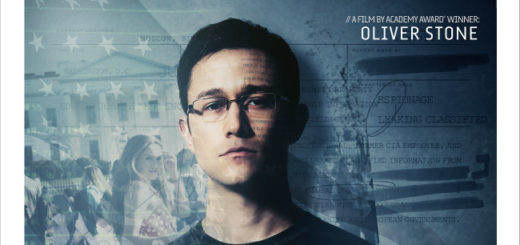
I see you don’t monetize xfdrmag.net, don’t waste your
traffic, you can earn additional cash every month with new monetization method.
This is the best adsense alternative for any type
of website (they approve all sites), for more details simply search in gooogle: murgrabia’s tools